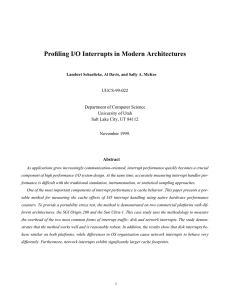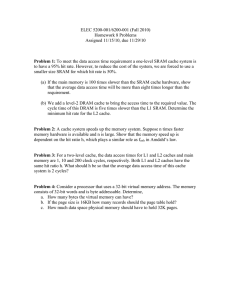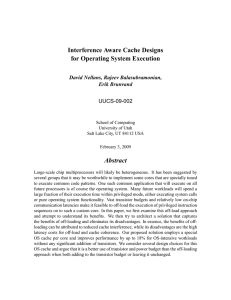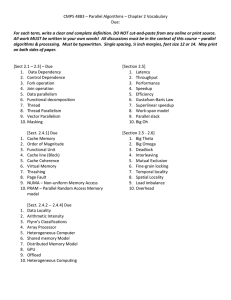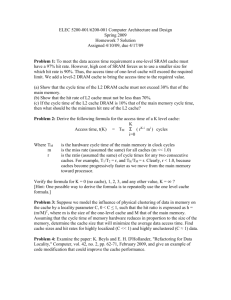CS 345 Homework #1
advertisement
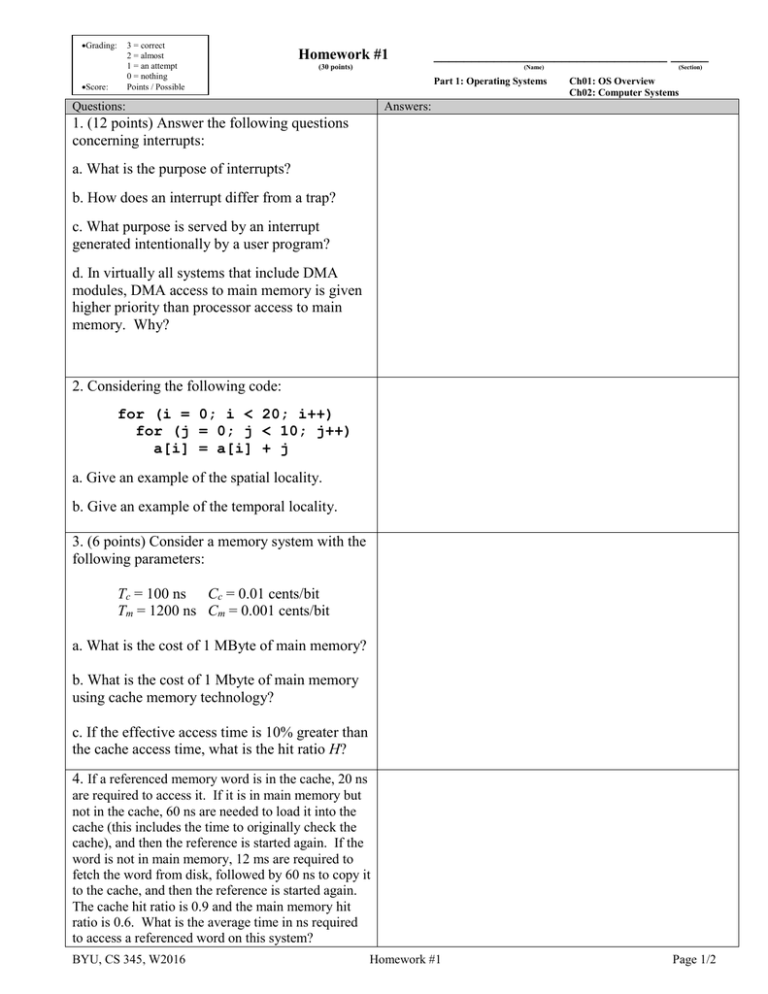
Grading: 3 = correct 2 = almost 1 = an attempt 0 = nothing Points / Possible Score: Homework #1 _______________________________ _____ (30 points) (Name) Part 1: Operating Systems Questions: (Section) Ch01: OS Overview Ch02: Computer Systems Answers: 1. (12 points) Answer the following questions concerning interrupts: a. What is the purpose of interrupts? b. How does an interrupt differ from a trap? c. What purpose is served by an interrupt generated intentionally by a user program? d. In virtually all systems that include DMA modules, DMA access to main memory is given higher priority than processor access to main memory. Why? 2. Considering the following code: for (i = 0; i < 20; i++) for (j = 0; j < 10; j++) a[i] = a[i] + j a. Give an example of the spatial locality. b. Give an example of the temporal locality. 3. (6 points) Consider a memory system with the following parameters: Tc = 100 ns Cc = 0.01 cents/bit Tm = 1200 ns Cm = 0.001 cents/bit a. What is the cost of 1 MByte of main memory? b. What is the cost of 1 Mbyte of main memory using cache memory technology? c. If the effective access time is 10% greater than the cache access time, what is the hit ratio H? 4. If a referenced memory word is in the cache, 20 ns are required to access it. If it is in main memory but not in the cache, 60 ns are needed to load it into the cache (this includes the time to originally check the cache), and then the reference is started again. If the word is not in main memory, 12 ms are required to fetch the word from disk, followed by 60 ns to copy it to the cache, and then the reference is started again. The cache hit ratio is 0.9 and the main memory hit ratio is 0.6. What is the average time in ns required to access a referenced word on this system? BYU, CS 345, W2016 Homework #1 Page 1/2 5. (12 points) The issue of resource utilization shows up in different forms in different types of operating systems. List what resources must be managed carefully in the following settings: a. Mainframe or minicomputer systems b. Workstations connected to servers c. Mobile computers 6. (15 points) How do the basic elements of a computer system relate to the design of an operating system? (Specifically address registers, interrupts, caching, input/output, and protection.) BYU, CS 345, W2016 Homework #1 Page 2/2

